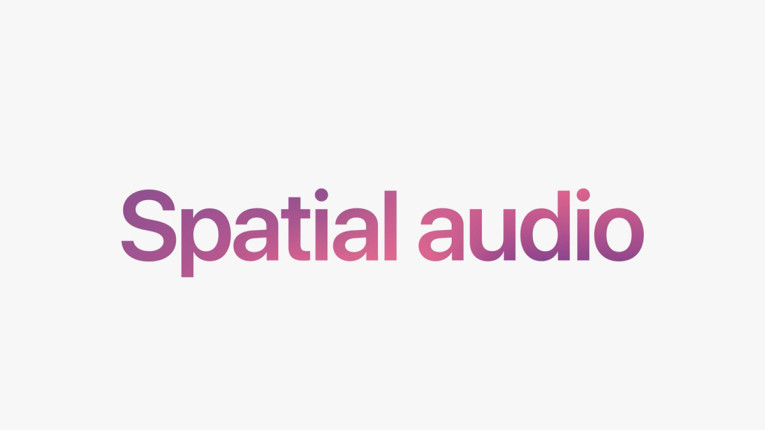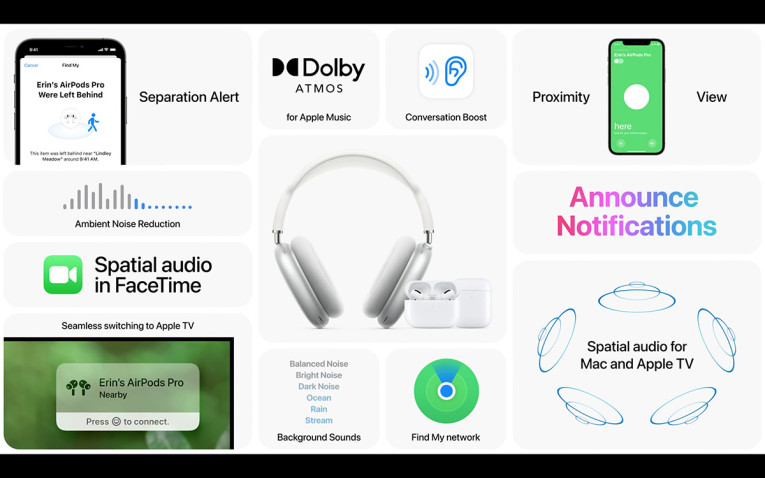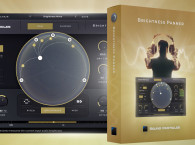
It's that crucial time of the year for developers, as another edition of Apple's WorldWide Developers Conference (WWDC) takes place. WWDC is where Apple paves the way for the evolution of its platforms and operating systems, revealing far more than other event throughout the year. And Apple used the opening keynote to officially confirm that not only Spatial Audio is available for Apple Music subscribers, but also that the company intends to evolve all its platforms and devices to support Spatial Audio - and that includes things like FaceTime calls.
The idea is that by using systems that support Spatial Audio reproduction - such as Apple's popular AirPods Pro or the extravagant AirPods Max headphones - users will be able to benefit from a superior form of sound reproduction. For now, everything tied only with Dolby Atmos, because that's how the vast majority of media content is available: TV, movies and music. Other forms of object-based audio, such as Sony 360 Reality Audio and MPEG-H Audio in general will probably follow.
So, in the same way as we are able to watch a movie with a Dolby Atmos soundtrack in a real home cinema, with at least a 7.1.4 speaker configuration - that is, 7 surround speakers, one subwoofer and four ceiling speakers - obtaining a real immersive audio experience, we are supposed to be able to put our AirPods Pro and receive the same "spatial" perception, as if we were surrounded by speakers. Because Dolby Atmos combines multichannel audio plus object-based audio, all the information needs to be rendered to a binaural format on the earbuds. Since the AirPods Pro support head-tracking, if we move our heads while watching the movie, the aural cues remain located precisely as with the speakers, reinforcing the feeling of being in a real home theater.
That is, until you compare the real 7.1.4 speaker installation with the AirPods Pro sound. The AirPods are impressive, but they are not the same thing as a real room with a Dolby Atmos 7.1.4 system, or a real cinema theater sound. But since we also don't have the space for the real 7.1.4 system in most of our homes, neither we have the rest of the calibrated equipment that is required for the best experience, the AirPods Pro do very nicely. Even compared with Dolby Atmos virtualizations on TVs and soundbars.
But that is for movies and screen content, which are normally mixed not only for Dolby Atmos, but also for DTS:X, Auro3D and other immersive audio formats. For music, the story is completely different. Music is recorded typically for a stereo target. Recording and mixing music for a Dolby Atmos setup is highly experimental territory and only a few artists have actually created original content for spatial or 3D audio installations - and normally they are focused on live music experiments. Yes, instrument separation increases, more "objects" can move (not exactly part of any conventional musical toolset), and a better representation of an acoustic environment can be added. All "spatial" tools can contribute to a feeling of being "closer" to the actual musicians and "being there." Is that better than stereo? Apple believes it is, and is determined to promote it.

In an interview for Billboard magazine, Apple senior vice president of Internet Software and Services Eddy Cue stated that Spatial Audio and Dolby Atmos could be the "game-changer" that the music industry has been waiting for, and he compared it to HD television — "pretty much any person can immediately tell a difference."
And there's no question that we all can "tell a difference" when switching between a track mixed in Spatial Audio and the same track in stereo. There's only one problem. It's not "spatial" as we know it. It's "Aural Exciter" different (audio pro's understand the reference). Some details get elevated, there's better frequency separation, a wider image, maybe there's more ambience. It's "glitter and sparkle" added to the music. And it can be exciting for the vast majority of consumers that only listen to music with headphones or in the car, and don't seat in front of a pair of speakers for more than five minutes anyway...
To try to convince us that there is a legitimate cause for Spatial Audio music, Apple is putting itself in the hotspot. And it called for its own Apple Music service radio DJ, Zane Lowe, to explain what's in it. Zane Lowe is also the streaming service’s co-head of Artist Relations and is well aware of what the new technology means for artists and how music fans will perceive it.
"First there was mono, then stereo, and now there’s Spatial Audio. Spatial is an immersive experience with sound moving around you in different directions. We have only had that kind of experience before in cinema. Have you ever wondered how that would work with music? I have," Zane Lowe states.
"I first got the opportunity to listen to Spatial Audio on AirPods; I was confused at first. 'Does this really work on AirPods? When do I get my car and go to some kind of listening room with special speakers?' And they were like, 'No, no — just press play.'
"Among the first songs I listened to were Lady Gaga’s “Rain on Me” and Kanye West’s “Black Skinhead.” It was hard to put into words because I’ve spent my whole life in a two-channel environment; I was born into stereo. It dawned on me that there are a lot of artists in the past and present who would have loved to be able to lean in with this kind of technology — to make their songs come to life, make them bigger, and just take them to levels no one had even thought of yet. But they only had two stereo channels to play with. Now they can go beyond that. So, to be able to hear parts of these songs coming from behind and around me? I was like, 'I’m all in. I get it.' TV got HD — now music gets Spatial."

"From here it’s going to be a really exciting journey. Eventually there will be new artists who are born into Spatial, just like I was born in stereo. Artists in the future might never even think about making a stereo record — because all they’ve ever known is Spatial. And making Spatial music is only going to get better. Apple is building immersive music-authoring tools directly into Logic Pro later this year. So any musician will be able to create and mix their songs in Spatial Audio for Apple Music — whether they’re in the studio, at home, or wherever."
And he throws: "Of course, stereo will always exist — no one is coming in and canceling stereo, just like they didn’t cancel mono. I've got a lot of mono records in my collection, and they sound great because they were designed to be heard in mono. Music that was designed to be heard in stereo will sound incredible in stereo like it always has. But now music will find its way to a Spatial environment. It’s not about the end of anything, it’s about the beginning of something new."
So, I guess there's no way of knowing until we tried it correct?
Well, the problem is, those of us who tried Dolby Atmos with real speakers aren't that convinced. But is it Apple's fault that Dolby started to call Dolby Atmos to sound on smartphones, tablets and anything that has speakers? I believe that was the root cause of the dilemma for us "audio geeks" that actually learned what Dolby Atmos was when it was introduced - and it was called Immersive Audio.

Anyway, I have been writing this while listening to the "Spatial Audio" tracks available in Apple Music (mostly music I wouldn't otherwise even care to listen). I have been listening with my head-tracking-enabled "magic chip" AirPods Pro and I've been doing a lot of head movements in an effort to try to find the drummer or the guitar player on the corner. Unfortunately, most of the content is just samples from a library, so, not much interest in "localizing" stuff. And there isn't any excitment to mention. No voice or guitar comes from the back or above our heads - fortunately, I would add. Even the Billie Eilish songs sounded intimate and "normal" in a way, while sometimes becoming a bit overwhelming and too harsh (intentionally distorted?) on AirPods.
A more interesting experiment is the remixed material. I previously enjoyed the remixed Miles Davis albums that I heard in "real" Dolby Atmos (with excellent speakers), and which were creatively "re-recorded" at Capitol studios. The Marvin Gaye "What's Going On" track is an interesting example to compare and is one of the tracks chosen for promoting the Spatial Audio content. Same applies to the also excellent Diana Ross "I'm Coming Out" track, with those amazing drums. And many jazz enthusiasts have Art Blakey & The Jazz Messengers to compare.
Unfortunately, the Marvin Gaye remix sounded too harsh for me on the AirPods Pro, compared with my studio monitors. I even compared listening to the original CD track file which I have stored (yes, it's lossless! :) and going back and forth with the Spatial Audio version on Apple Music - on the monitors. There's a noticeable difference with the Spatial Audio mix having much more detail in the mids and highs, and a reinforced bass. Like an elevated stage, but not elevated dynamics, since the overall level sounded louder. The Spatial Audio content sounded in general much louder than the stereo material, making it difficult to balance. (update: I have rechecked the settings since I was playing material from two different sources and after redefining the output in both players to use 24-bit Integer (96kHz), and adjusting the levels precisely with test signals, I can confirm my impressions when played back on a two-channel system. I can also confirm that the Spatial Audio files are slightly quieter on the AirPods, since they also use a diferent loudness target for Dolby Atmos (-18LUFS, instead of -16LUFS ). The increased dynamics apparently result in some "summing" effect boosting selected frequencies when played on a conventional stereo system).
But is it "spatial"? Not while listening on my stereo 2.1 monitor system, of course. But neither was with the AirPods Pro. Everything sounded like an over-tweaked Optimod preset. Something else I noticed was that, when selecting a specific track, there's clearly a "ramping" effect, while the track is cached to memory. It sounds "flat" and suddenly it "opens". Not certain if that was because I was also choosing to stream lossless and hi-res when available. In fact, the only way to know what you are streaming is by selecting the "file info" when playing a track. All the streaming "spatial audio" tracks were AAC 256kbps. I selected to download the Dolby Atmos tracks just in case.
Apparently, Apple is going to introduce Spatial Audio even for video calls. FaceTime will (starting Fall 2021) include a suite of new audio and video features that "make calls feel more natural and lifelike." As Apple explains, "With spatial audio, voices in a FaceTime call sound like they are coming from where the person is positioned on the screen, while Voice Isolation ensures the user’s voice is crystal clear and uses machine learning to eliminate background noise, and Wide Spectrum allows all the sound in the area to come through so participants can hear everything." That might make more sense than Dolby Atmos music actually.
www.dolby.com | www.apple.com








